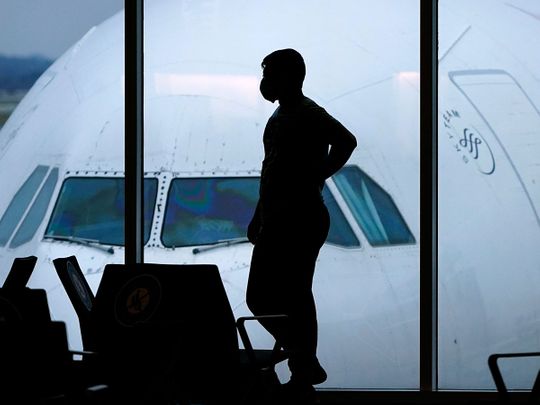
Dubai: Airlines worldwide are giving up hope that passenger demand will return to levels of pre-COVID-19 normalcy by summer. Now, they are pushing thoughts of recovery closer to early next 2022.
In its most recent briefing, IATA (international Air Transport Association) said 2021 global air traffic – measured in terms of revenue passenger kilometers – may be at 38 per cent of 2019 levels. If governments remain more cautious towards relaxing travel restrictions, that could drop further to 33 per cent.
“There’s an additional risk today with respect to the way governments may or may not lower restrictions on international travel,” said Brian Pearce, IATA’s Chief Economist. “The science is that governments will start lowering those barriers once the vulnerable parts of the population are vaccinated.
“The consequence of all that is that the recovery in passenger revenues could well be slower than we were expecting.”

Concerns escalate
C-suite executives at major airlines have begun to take note of the situation. “The tendency is to control first, restrict for longer and then open when the metrics suggest things are going to get better,” said Tim Clark, President of Emirates airline, during an industry call. “We've seen countries take fairly draconian positions with regard to access to international travel.”
Airlines the world over had thought they could use reworked debt provisions and government relief to get through until the first quarter of 2021. But the much-anticipated recovery is going to take longer now, said Clark.
“Therefore you see the cries from a number of entities within the industry saying we're going to run short of cash very quickly,” he added.
The airline industry could burn cash in the range of $75 billion to $95 billion this year, much higher than the previously estimate of $48 billion, according to IATA.
Nearly 12 months after the pandemic shook the aviation industry, state support for airlines is dwindling. The cargo business, which helped carriers stay afloat as commercial flights came to a halt, is facing capacity issues and can absolutely not grow any further.
What went wrong?
Airlines were seeing a modest recovery in air travel just after summer last year as governments eased restrictions on the back of falling COVID-19 cases. However, the appearance of virus variants in the UK and South Africa prompted countries to once again place tight restrictions on air travel.
The UK placed UAE on its travel ban list, virtually shutting down the world’s busiest air route - London-Dubai - overnight. The US, which is the largest aviation market, reintroduced a seven-day quarantine, a move that is expected to put further strain on airlines operating those routes.
Even in China and Russia, where domestic markets had seen a better-than-expected improvement in traffic last year, things are looking bleak now.
“You can see that domestic bookings have now started to deteriorate - and these are bookings for future travel,” said IATA’s Pearce. “This means the first-half of this year is looking quite a bit weaker than we were expecting, when we issued our forecasts in December.”








